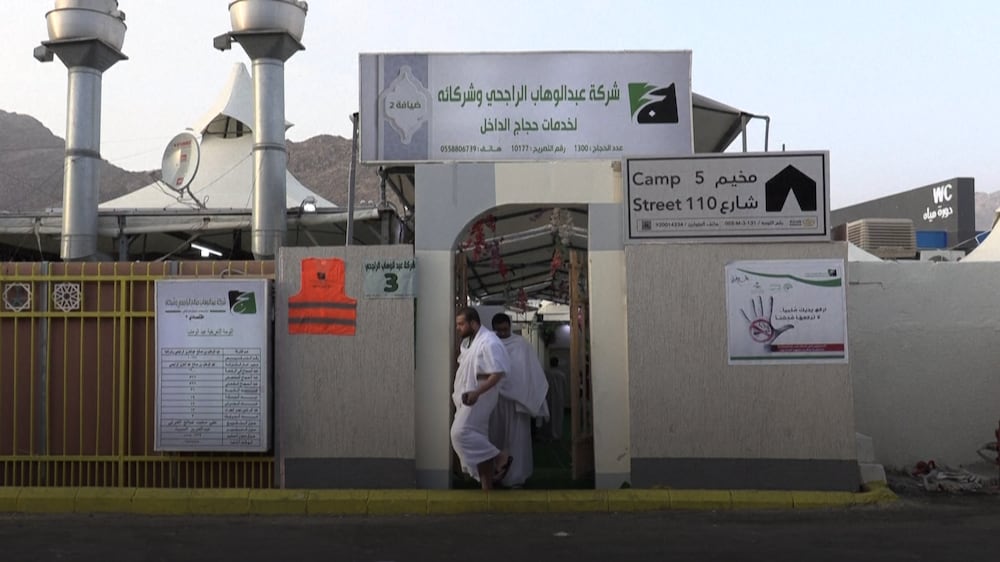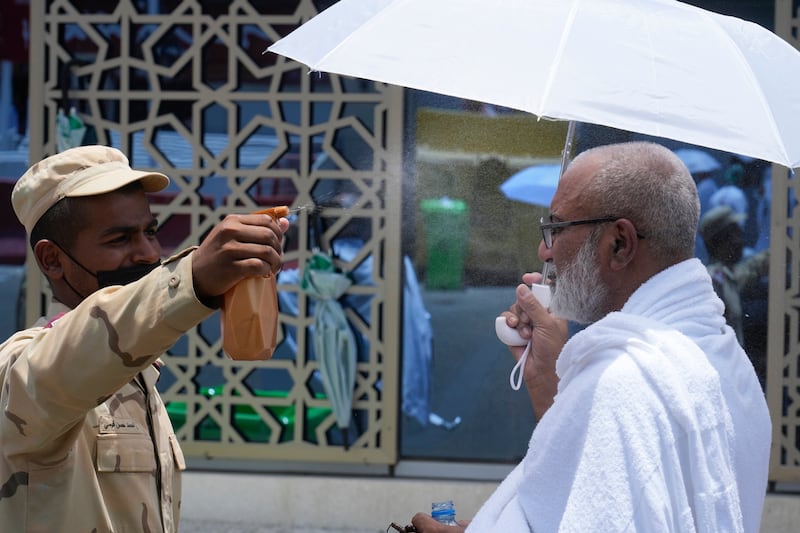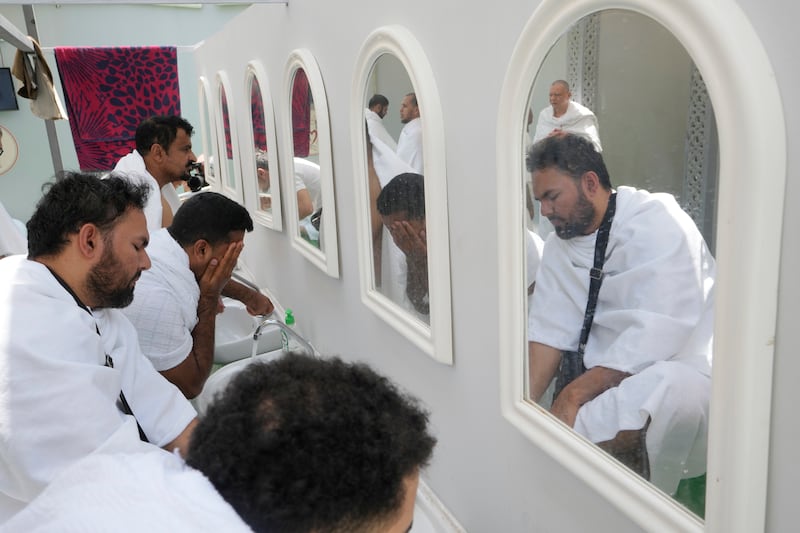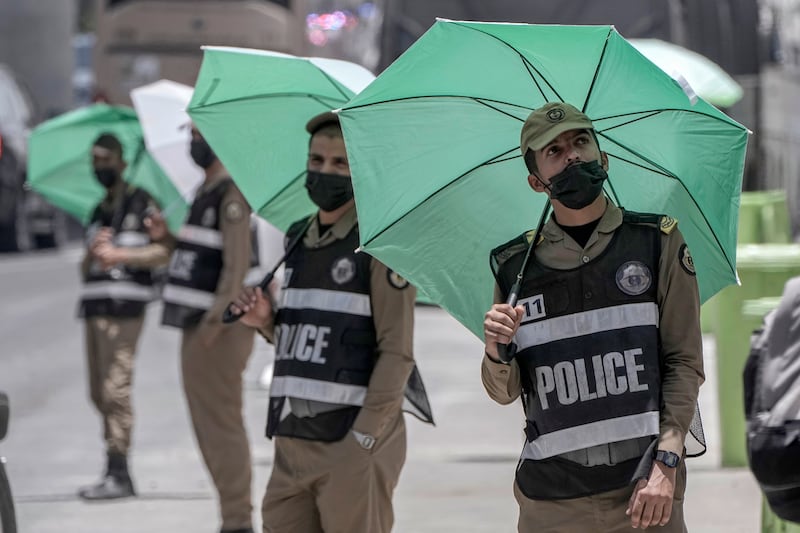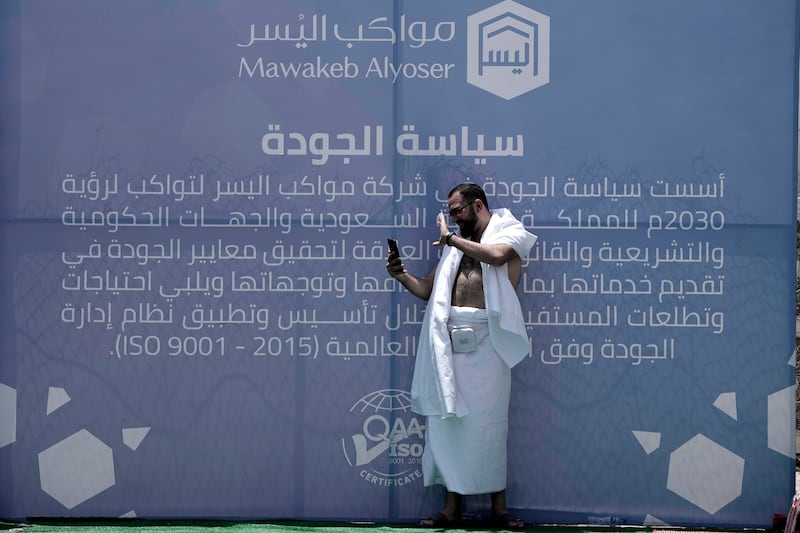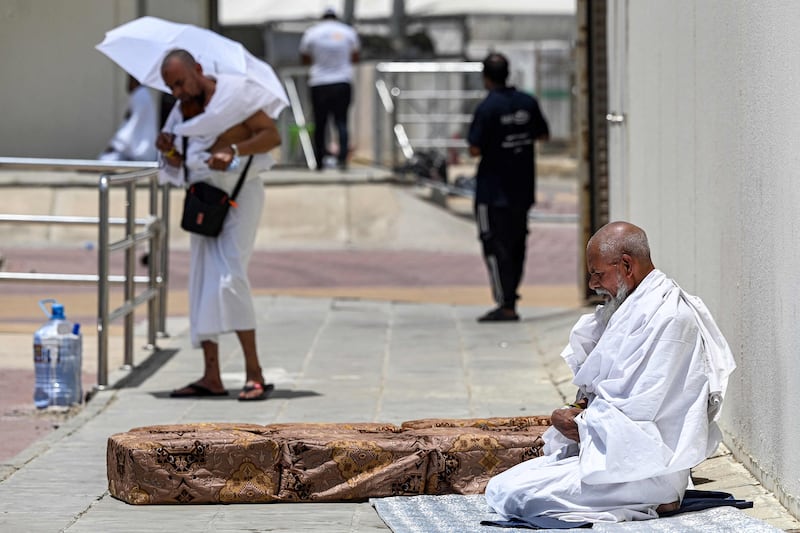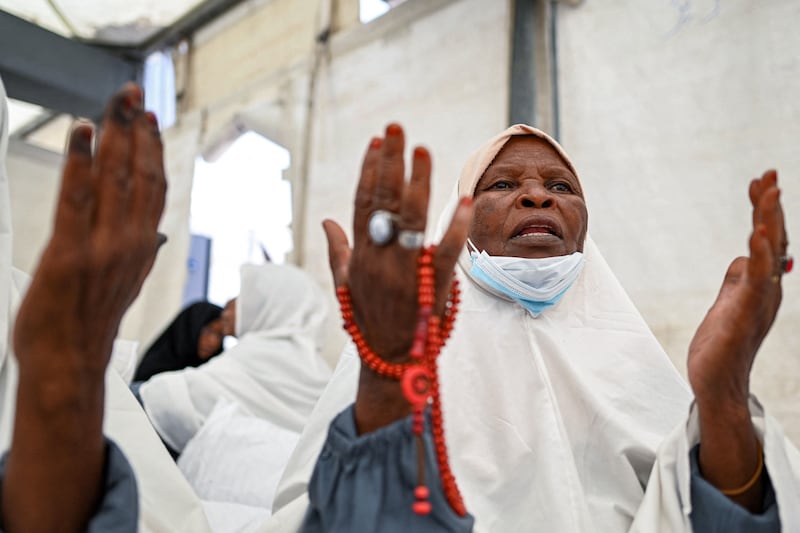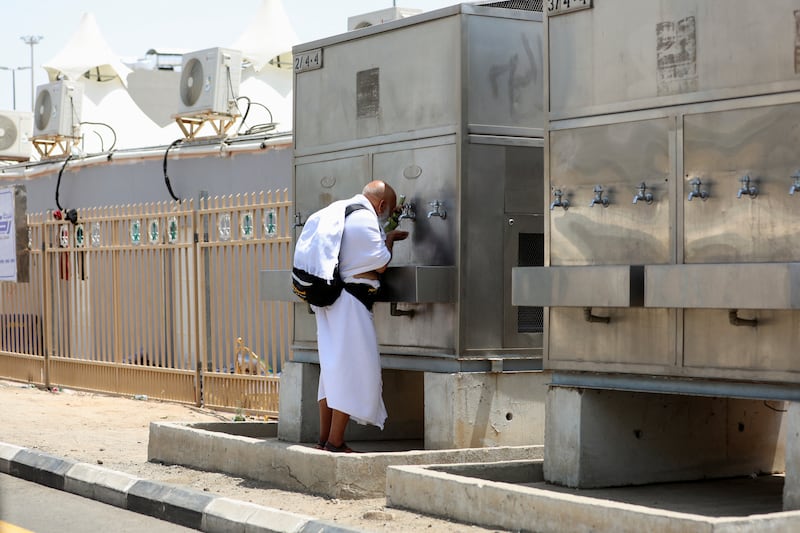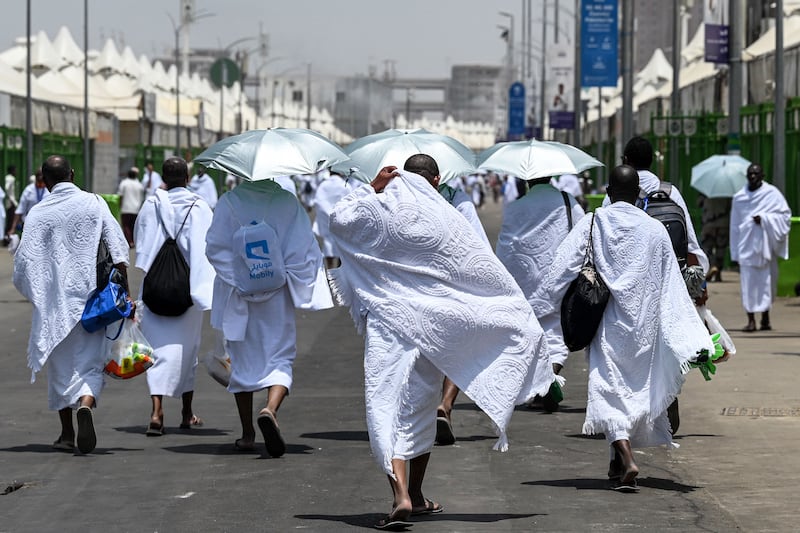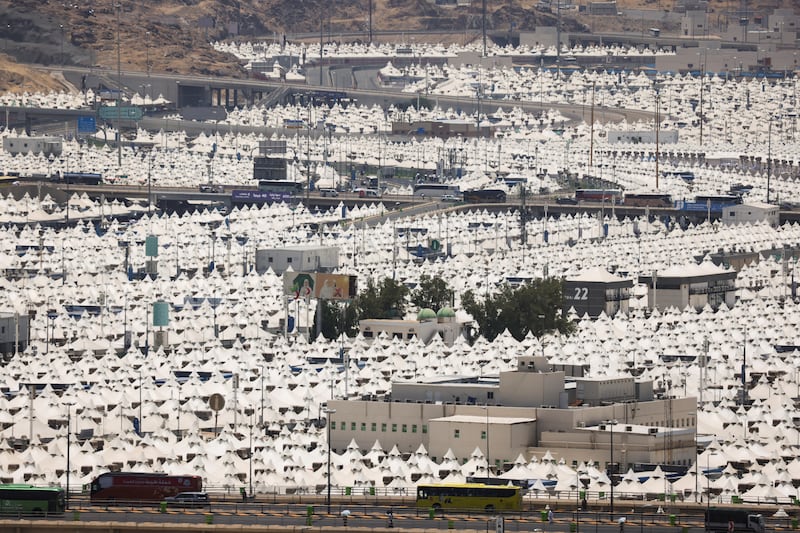Read the latest updates on the Hajj pilgrimage here
Pilgrims made their way by foot and by bus to Mina, where they will camp at one of the largest tent cities in the world, in Saudi Arabia.
Mina will be home to millions on the 8th, 11th and 12th day of the month of Dhu Al Hijjah in the Islamic lunar calendar as pilgrims stay during the Hajj.
The Mina valley, around 5km east of the Grand Mosque, is an open space covered with more than 100,000 air-conditioned tents that can accommodate over 2.6 million people, extending over 2.5 million square meters.
The tents themselves come in three sizes: eight square metres, six by eight metres or 12 by eight metres. The tents are linked to each other via paved, illuminated and signposted corridors.
Mina is known as the largest tent city in the world. Pilgrims must stay in Mina during Hajj and perform the Stoning of the Devil at the Jamarat. The ritual is performed between sunrise and sunset in the final days of the Hajj.
The tents are segregated between men and women but are equipped with kitchens, bathrooms and ablution stations.
History of Mina
In the 1900s, regular tent fires used to break out in Mina due to pilgrims not following safety guidelines, causing injuries and damage. This led to the Saudi government making tents at Mina.
Initially, tents were made of cotton but after a fire broke out in 1997, flame-retardant tents were introduced, made with Teflon-coated fibreglass cloth resistant to heat.
Fire extinguishers are now found every 100 metres in Mina. Each group of tents is surrounded by metal fences for security, with main gates and emergency exits.
9,000 standard and electric wheelchairs have been provided for pilgrims who need them.
“There are great facilities for elderly people with disabilities. My father did his Umrah on the wheelchair and many women were driving the motor cars they have,” Shaima Akram, a Pakistani pilgrim told The National.
“I am so relieved we were able to finish Umrah quickly because my father got the opportunity. The guides and volunteers are very helpful we are looking forward to our stay in Mina today.”
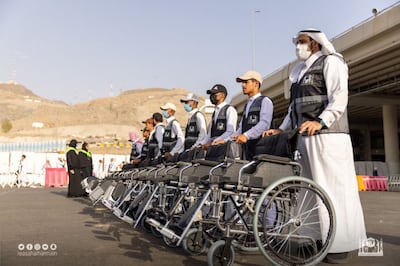
The 8th day of Dhul Al Hijjah, when pilgrims arrive at Mina, is called Yawm Al Tarwiyah, or the day of irrigation because of the tradition of people having to carry water with them to the site in preparation for the Day of Arafah when Muslims ascent Mount Arafat.
The ascension of Mount Arafat, which will take place on Tuesday, is the most important day of Hajj. It is where the Prophet Mohammed gave his last sermon.
Upon arriving in Mina, pilgrims fill their day with prayers, supplications and reading the Quran. They are allowed to shorten their prayers, by conjoining the dhuhr and asr prayers and the maghrib and isha prayers.
Those attending are advised to get enough rest and sleep in preparation for the ascension of Mount Arafat.
The 11th, 12th and 13th days of Dhu Al Hijjah are called the days of Al Tashreeq – they are also when Eid Al Adha falls and are celebrated by practising Muslims and pilgrims for their completion of Hajj.
